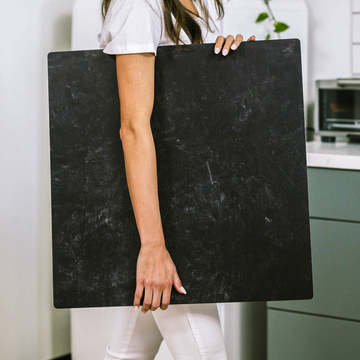Think paper backdrops are all about picking a color that matches your vibe? Think again. Behind every sheer, white, or pastel roll lies a surprisingly complex world that shapes not only your photos but also your brand. If you’re a maker, a photographer, or a creative running a small business, understanding what-and who-your paper is really working for can transform your product photography from ordinary to unforgettable.
Surface Sheen: Not All "Matte" Is Created Equal
Ever noticed strange patches of glare or uneven reflections in your images? This comes down to surface sheen-specifically, the micro-gloss level of your backdrop. True matte paper, made for photography, scatters light cleanly in every direction. This makes for soft, even backgrounds without "hot spots" that draw the viewer’s eye away from your product. By contrast, standard craft or budget papers often sneak in unwanted satin finishes, causing unpredictable reflections under your studio lights.
Pro tip: Serious photo backdrop brands actually test for micro-gloss using specialized meters-aiming for ultra-low gloss that keeps your backgrounds beautifully even and distraction-free.
Fiber Density: The Invisible Foundation
Have you ever lit your setup only to notice your colored paper looking patchy or even see-through? That culprit is fiber density. Photography-grade backdrop paper is densely pressed for maximum opacity, while craft paper often lets window or edge light bleed right through. For creators shooting in home studios, dense paper is essential if you want solid, true backgrounds-even in challenging light.
- Low-density paper: prone to light leaks, color shifts, unprofessional gradients
- High-density seamless: consistent coverage, more pro results
Fun fact: Some shoot through thin paper intentionally for dreamy effects, but for sharp, e-commerce-ready images, dense is always better.
Spectral Response: When White Isn’t Really White
Ever had your beautiful white mug come out looking just a bit blue, or pink, no matter how you tweak your camera? The often-overlooked factor here is the spectral response of your background-how it reflects different colors of light. Many cheap or generic papers are loaded with optical brightening agents (OBAs). These boost the paper's "whiteness" under certain light, but also introduce unpredictable color casts for your subjects and throw off color correction workflows.
If you want reliable color and true-to-life product shots, opt for papers made for photography and double-check their performance under your actual studio or window lights before your most important shoots.
Surface Microstructure: Texture Shows Up Where It Counts
Zoom in close, especially with a macro lens or hard lighting, and you’ll sometimes spot the paper’s micro-texture-grain or irregularities invisible to the eye, but glaring in your final image. Photography backdrops are engineered to be as smooth as possible, while arts-and-crafts rolls (like watercolor or drawing paper) often have pronounced fibers and textures. That subtle roughness can lower the perceived quality of even the sharpest product photos.
Keep an eye out: In high-resolution or macro photography, even tiny imperfections are magnified and may detract from your product’s premium feel.
Handling Paper: Wear and Tear You Can’t Unsee
PVC, plastic, acrylic, and other hard surfaces often last years, but paper is a consumable. Every crease, oily fingerprint, or scuff changes how your background takes light. Even slight damage creates dull or shiny patches that cost you time in retouching-or, worse, erode the professional polish of your photos. The solution is simple but crucial:
- Handle your backdrops with care-use clean hands or even gloves for lighter colors.
- Always roll out a fresh section for each session, and trim away damaged pieces before your next shoot.
Consider paper backdrops as an investment in stellar image quality, not just a one-time purchase.
The Psychology of Your Backdrop: Brand Storytelling in Every Shot
Your paper backdrop does more than just fade into the background-it subtly signals your values and your attention to detail. A spotless, bright, professionally rolled paper tells your audience you care about every part of your presentation. Conversely, a crumpled or unevenly lit background can undercut all the effort you put into your products.
If you show behind-the-scenes snippets on social or your website, revealing your clean, methodical workspace builds trust with your customers, reinforcing your reputation for quality and professionalism.
Checklist: Getting the Most From Your Paper Backdrop
- Choose pro-grade, low-gloss, photo-specific paper for the best lighting and color control.
- Test for texture, density, and color shifts before critical shoots-especially with new lighting setups.
- Handle with care; treat fresh paper as a worthy investment in your image quality.
- Look for signs your backdrop might be influencing your workflow or your audience’s perception-and upgrade where it counts.
With a little knowledge and attention, even the simplest roll of paper becomes a powerful tool in your product photography arsenal. Get the science right, and the art always follows.
What subtle backdrop secrets have you discovered in your own setup? Share your tips, questions, or lightbulb moments in the comments below!



